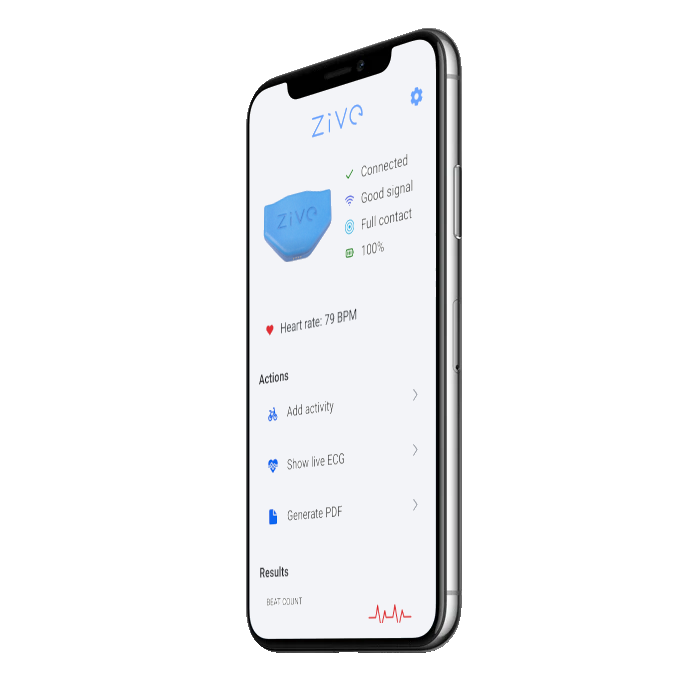A 7-day Holter monitor offers several advantages over a 1-day (24-hour) Holter monitor due to the increased duration of cardiac rhythm monitoring, which allows for a more comprehensive evaluation of cardiac function. The benefits can be summarized as follows:
1. Increased Detection of Intermittent Arrhythmias:
- Higher Sensitivity for Detecting Episodic Events: Intermittent arrhythmias, such as paroxysmal atrial fibrillation (AF), premature ventricular contractions (PVCs), or supraventricular tachycardia (SVT), may occur infrequently and could be missed during a shorter monitoring period. A 7-day Holter monitor extends the observation window, increasing the likelihood of capturing these sporadic arrhythmic events. Studies have shown that the diagnostic yield for arrhythmias significantly increases with longer monitoring durations.
- Improved Symptom-Rhythm Correlation: Many cardiac symptoms, including palpitations, dizziness, syncope, or near-syncope, do not necessarily occur daily. A 7-day monitoring period enhances the ability to correlate symptomatic episodes with electrocardiographic data, thereby improving diagnostic accuracy.
2. Enhanced Assessment of Cardiac Rhythm Variability:
- Comprehensive Data Collection: A longer monitoring duration allows for the collection of more extensive cardiac rhythm data, providing a better representation of the patient's overall rhythm patterns, which can vary day-to-day. This is particularly important for assessing conditions like sinus node dysfunction or intermittent conduction abnormalities.
- Detection of Low-Burden Arrhythmias: A 7-day Holter monitor increases the probability of detecting low-burden arrhythmias (those with low frequency or short duration) that might not be captured within a 24-hour period. For example, low-burden paroxysmal AF might not manifest within a shorter monitoring timeframe but can be detected with extended monitoring.
3. Improved Risk Stratification:
- Refinement of Risk Assessment: Extended monitoring can better quantify the burden and complexity of arrhythmias, such as the frequency and duration of atrial fibrillation or ventricular ectopy. This data can be crucial in stratifying patients' risk for thromboembolic events, sudden cardiac death, or the need for more aggressive therapeutic interventions.
- Enhanced Prognostic Value: Continuous monitoring over a more extended period allows for the identification of high-risk patients who may benefit from early intervention, such as anticoagulation for atrial fibrillation or the implantation of a cardioverter-defibrillator in cases of malignant ventricular arrhythmias.
4. Reduced Incidence of False Negatives:
- Lower Probability of Missed Diagnoses: A 1-day Holter monitor is associated with a higher likelihood of false negatives due to its shorter observation period, which may fail to capture infrequent arrhythmic events. A 7-day monitor substantially reduces this risk, improving diagnostic accuracy.
5. Informed Clinical Decision-Making and Management:
- Tailored Therapeutic Approaches: The comprehensive data from a 7-day Holter monitor provides clinicians with a more detailed understanding of a patient's arrhythmic profile, enabling more precise treatment decisions. This may include optimization of antiarrhythmic medications, consideration for catheter ablation, or the initiation of anticoagulation therapy.
- Cost-Effectiveness in Diagnostic Evaluation: While the initial cost of a 7-day monitor may be higher than a 1-day monitor, it may reduce the need for repeated testing or additional diagnostic procedures, thereby being more cost-effective in the long term.
6. Superior Evaluation of Asymptomatic Arrhythmias:
- Detection of Subclinical Arrhythmias: Longer monitoring allows for the identification of asymptomatic arrhythmias, which may be clinically significant. For example, subclinical atrial fibrillation is associated with an increased risk of stroke and heart failure, and its detection through extended monitoring may warrant early intervention.
In conclusion, a 7-day Holter monitor offers a more robust, comprehensive assessment of cardiac rhythm, improves the diagnostic yield, and enhances clinical decision-making, particularly in patients with suspected intermittent arrhythmias or variable rhythm disturbances. This extended monitoring period is associated with higher sensitivity and specificity, making it a superior choice in many clinical contexts. The ZIVE Holter Monitor enables comfortable, long-term monitoring at home for any period of time, from a day to a month and longer.
